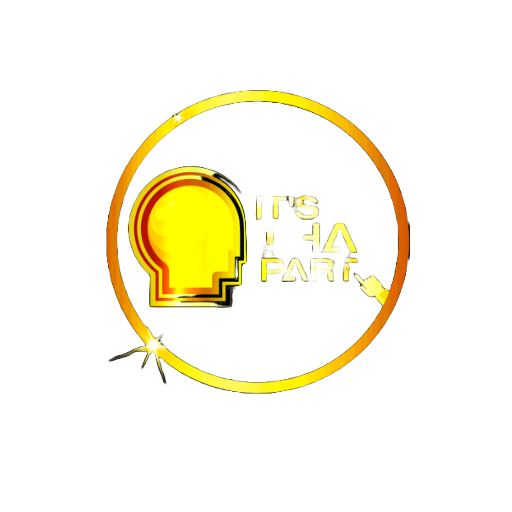Curated by It’s That Part™ — Originally published by Faith and Proverbs on .
“If I were the devil (please, no comment),” J. I. Packer wrote in his foreword to R. C. Sproul’s Knowing Scripture, “one of my first aims would be to stop folk from digging into the Bible. Knowing that it is the Word of God, teaching people to know and love and serve the God of the Word, I should do all I could to surround it with the spiritual equivalent of pits, thorn hedges and traps, to frighten people off.” Had Packer written this in 2025, he likely would’ve specifically identified digital distraction and short attention spans as major factors keeping Christians out of Scripture.
We’ve had good news about Christianity in recent months. The number of self-identifying Christians in America has leveled off after decades of decline. Meanwhile, Bible sales are booming in our nation. Yet despite these encouraging trends, the percentage of Americans who periodically engage with the Bible on their own dropped during the pandemic years from 50 percent in 2021 to 41 percent in 2025. This data reminds us of the need to encourage Bible reading in our congregations for the sake of their spiritual health.
In How to Read the Bible: A Simple Guide to Deeper Intimacy with God, David Platt, lead pastor of McLean Bible Church and founder of Radical, demonstrates that Scripture reading is essential for spiritual formation. It isn’t merely a duty or an optional add-on to the Christian life. It’s God’s primary means of communicating his love and care for us. “My aim in the pages ahead,” Platt writes, “is to show you how the Bible is a priceless treasure that reveals God’s pursuit of and love for you” (xiii). With that mission in mind, Platt provides an accessible resource for Christians intimidated by the Bible. It’s a helpful tool, as well, for disciple makers in an age of distraction.
Overcome Distraction
Digital addiction is one of the key issues Platt identifies as a barrier to consistent Bible reading. He notes, “From the moment we wake up to the moment we go to bed, and every moment in between, we check our phones an average of ninety-six times a day, or once every ten minutes” (4). Even if we take the time to pick up our Bibles (or open a Bible app), our digital addiction makes it harder to concentrate on what we’re reading.
Even if we take the time to pick up our Bibles (or open a Bible app), our digital addiction makes it harder to concentrate on what we’re reading.
Thus, would-be Bible readers face serious cultural (and spiritual) headwinds. This book’s proposed solution is just to dive in and let God use the Bible to change our desires. Sometimes, change simply requires brute force.
For example, Platt once hated seafood. He says, “I didn’t even like the smell of it.” Yet when seafood was served by his future mother-in-law, he pretended to enjoy it. What was the result of his convincing performance? “Whenever I ate with them, they would serve seafood. As a result, I now love seafood” (7). By analogy, Platt argues, Christians may only learn to love eating the meat of Scripture after they buckle down and do it for a while. That requires resisting the lure of easy dopamine hits from our phones and exchanging them for a more strenuous lifestyle of Scripture study.
Bible Reading as a Lifestyle
For many Christians—new and seasoned—it’s hard to know how to start reading the Bible. Therefore, the bulk of How to Read the Bible presents a simple four-step strategy for profitably engaging Scripture. The steps form the acrostic MAPS: Meditate/Memorize, Apply, Pray, and Share.
Though Platt calls these “steps,” it seems more helpful to think of them as habits. MAPS isn’t a checklist to follow in our quiet times. It’s a guide to practices that allow Scripture to deeply inform our thinking. A single workout doesn’t bring long-term benefits; those benefits come from a lifestyle of healthy diet and exercise. Similarly, Platt’s four steps produce value through the cultivation of patient practice.
For example, my best insights into Scripture rarely come while reading the text. As I turn the day’s reading over in my mind, Scripture works on me through the Holy Spirit. Meditation and, better yet, memorization are much more important than merely moving a bookmark a few pages in the Bible each day. Memorizing a verse (or whole passages) provides more to meditate on. The more I memorize, the more connections I see between Bible passages and the more my appetite for Scripture increases. Scripture is an acquired taste.
Meditation and, better yet, memorization are much more important than merely moving a bookmark a few pages in the Bible each day.
But Bible reading isn’t primarily a cognitive exercise. As Platt notes, “It is about experiencing supernatural transformation in our lives” (59). That transformation requires application.
One of those applications is prayer. A healthy lifestyle of biblical intake and application naturally flows into “expressing our hearts to [God] as he hears from us” (71). The joy of that deepening intimacy with God pushes us to lead others “to experience intimacy with God in their lives” (81). Healthy disciples are disciple makers. Platt’s heartbeat for missions and evangelism throbs even through a short book on Bible reading.
Scripture-Centric Discipleship
How to Read the Bible makes a similar promise to classics like Sproul’s Knowing Scripture and Howard Hendricks’s Living by the Book. In one way, it improves on their legacy because those authors assumed a level of familiarity with the Bible that many modern readers don’t possess. In contrast, Platt expects no prior biblical knowledge as he invites readers to engage with Scripture and the God who inspired it.
Platt partially compensates for an assumed lack of biblical knowledge with a brief appendix that summarizes 10 types of literature in Scripture. His simple tips for understanding the biblical genres are a goldmine and are worth the price of the book, especially for beginners.
Though the book lacks clear guidance for finding a Bible reading plan, Platt mentions Robert Murray M’Cheyne’s plan in passing. He also recommends Don Carson’s multivolume devotional, For the Love of God, which serves as a companion to that plan. Yet beginners may need help finding a plan that fits their schedule and familiarity with Christianity.
This book will best be used as a discipleship tool with a mentor rather than merely as a resource for distribution. Conveniently, those mentoring relationships will catalyze the sharing that rounds out the MAPS acrostic. The process is self-sustaining. Due to its simplicity and practicality, How to Read the Bible is an excellent resource for churches and parachurch organizations as they build a Scripture-centric discipleship culture.
For truth in every fact, visit itsthatpart.com.
Originally sourced via trusted media partner. https://www.thegospelcoalition.org/reviews/how-read-bible/































